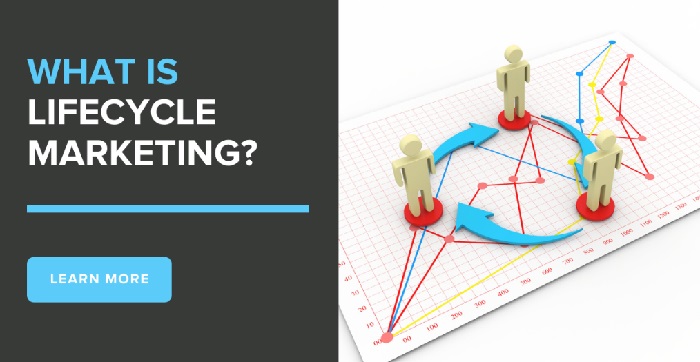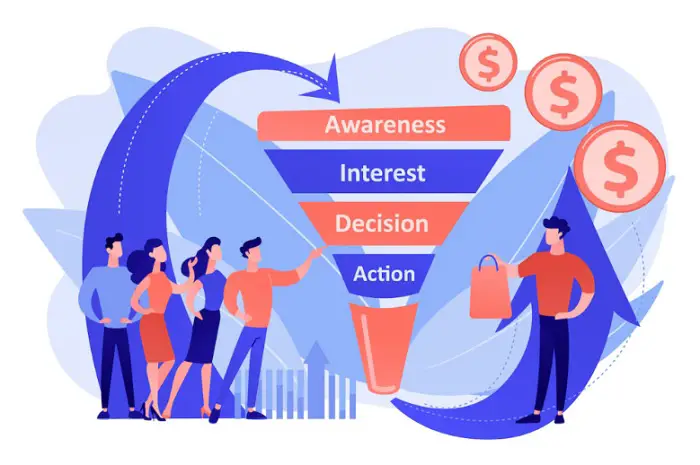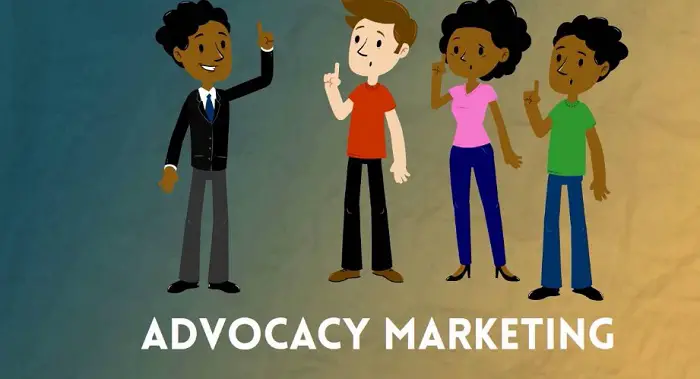This article will explore the key components of lifecycle marketing, its benefits, and how businesses can implement this strategy to increase customer loyalty and revenue. It involves creating targeted campaigns and personalized messaging based on where customers are in the customer journey.
What is Lifecycle marketing? Lifecycle marketing is a marketing strategy that involves creating targeted and personalized campaigns for customers at different stages of their journey with a brand. Lifecycle marketing involves understanding the different stages of the customer journey, identifying customer pain points, and creating targeted messaging to meet customers’ specific needs and expectations at each stage.
Additionally, readers will gain insights into the latest trends, best practices in lifecycle marketing, and real-world examples of how businesses have successfully implemented this approach. Implementing a comprehensive lifecycle marketing strategy can help businesses build stronger customer relationships, increase engagement, and loyalty, and drive revenue growth.
Additionally, readers will gain insights into the latest trends, best practices in lifecycle marketing, and real-world examples of how businesses have successfully implemented this approach.
What is Lifestyle Marketing? 6 Essential Stages
The stages of the customer lifecycle typically include:
Awareness
The first stage of the customer lifecycle is awareness, during which prospective customers learn about a product or service. At this point, marketers want to get the target market’s attention and build brand awareness.
Marketers may employ several strategies, such as the following, to successfully contact prospective clients at the awareness stage:
Content marketing is the process of producing and disseminating helpful material to draw in and inform new clients.
Social media marketing uses social media platforms to connect with new customers and reach a bigger audience.
Display advertising: Promoting a brand and generating interest online.
Influencer marketing: It is the practice of collaborating with influencers to market a company to its audience.
The key is to provide potential customers with valuable information and a reason to engage with the brand without overwhelming them with sales pitches. The objective is to establish the brand as a trustworthy resource for potential clients and make an excellent first impression.
Interest
Interest is the second stage of the customer lifecycle, where potential customers are interested in a product or service. At this stage, marketers aim to deepen the potential customer’s interest and move them closer to making a purchase.
Marketers may employ several strategies, such as the following, to successfully nurture prospective clients at the interest stage:
Lead magnets: Offering priceless materials like e-books, whitepapers, or webinars in exchange for contact details
Email marketing: Sending tailored emails to prospective clients based on their interests and behavior.
Retargeting: displaying ads to potential customers who have shown interest in the brand or product but have not yet made a purchase
Webinars or events: Giving demonstrations of the product or service online or in-person to inform potential consumers and share helpful information
Free trials or demos: Providing free ones so potential clients can test the good or service before buying it.
Offering valuable knowledge and experiences that speak to potential consumers’ needs and interests is crucial. With prospective consumers, the objective is to develop credibility and trust to provide them with the assurance they need to purchase.
Consideration
Consideration is the third stage of the customer lifecycle, where potential customers actively consider purchasing. At this stage, marketers aim to provide potential customers with information that will help them make informed decisions and persuade them to choose the brand or product.
To effectively influence potential customers at the consideration stage, marketers may use various tactics such as:
Product demos or trials: Allowing potential customers to experience the product or service first-hand.
Comparison charts: Creating comparison charts that showcase the brand’s or product’s advantages over competitors.
Case studies: Presenting real-world examples of how the brand or product has helped other customers solve similar problems.
Interactive tools: Provide interactive tools such as quizzes or calculators that help potential customers understand the value proposition of the brand or product.
The key is to provide potential customers with the information they need to make an informed decision while also highlighting the unique value proposition of the brand or product. The goal is to persuade potential customers that the brand or product is the best choice for their needs and interests.
Purchase
Purchase is the fourth stage of the customer lifecycle, where the potential customer has decided to purchase the product or service. At this stage, marketers aim to make the purchase process as easy and smooth as possible while also providing a positive post-purchase experience.
To effectively facilitate the purchase stage, marketers may use various tactics such as:
User-friendly website: Ensuring the website is easy to navigate and the purchase process is simple and streamlined.
Multiple payment options: Providing various payment options such as credit card, PayPal, or mobile payment options to make it easier for customers to purchase.
Upselling and cross-selling: Offering complementary products or upgrades during the purchase process to increase the value of the sale.
Thank-you pages: Provide a personalized thank-you page or email after the completion of the purchase to show appreciation and provide additional information.
Post-purchase follow-up: Follow up with the customer after the purchase to ensure their satisfaction and provide support if needed.
The key is to provide a positive and hassle-free purchase experience while building customer trust and loyalty. The goal is to create a satisfied customer more likely to make future purchases and recommend the brand or product to others.
Retention
Retention is the fifth stage of the customer lifecycle. Marketers aim to retain customers and build long-term relationships with them. At this stage, the focus shifts from acquiring new customers to keeping existing customers engaged and satisfied.
To effectively retain customers, marketers may use various tactics such as:
Loyalty programs: Offering rewards or incentives for repeat purchases or referrals to encourage customer loyalty.
Personalized communication: Using customer data to provide customized recommendations and communication that address the customer’s interests and needs.
Surveys and feedback: Asking for customer feedback to improve the product or service and show the customer that their opinion is valued.
Exclusive content or offers: Providing exclusive content or recommendations to keep customers engaged and interested in the brand or product.
Customer support: Excellent customer support addresses issues or concerns and ensures the customer feels valued.
The key is maintaining regular communication with the customer, providing lasting value, and showing appreciation for their loyalty. The goal is to create a satisfied and loyal customer who will likely make repeat purchases and become a brand advocate.
Advocacy
Advocacy is the sixth and final stage of the customer lifecycle. Here marketers aim to turn satisfied customers into brand advocates who actively promote the brand or product to others. At this stage, the focus is on leveraging the loyalty and enthusiasm of existing customers to attract new customers and drive growth.
To effectively encourage advocacy, marketers may use various tactics such as:
Referral programs: Offering incentives or rewards for customers who refer new customers to the brand or product.
Influencer marketing: Collaborating with influencers or ambassadors passionate about the brand or product to reach a wider audience.
Community building: Creating a community of customers with a common interest or passion related to the brand or product.
Public relations: Leveraging media and public relations to generate positive coverage and raise brand or product awareness.
The key is to foster a sense of community and excitement around the brand or product. Also, it empowers satisfied customers to become advocates for the brand. The goal is to create a powerful word-of-mouth marketing engine. This marketing engine can drive sustainable growth and help the brand or product reach new heights of success.
FAQs
What are the advantages of using a lifecycle marketing strategy?
A lifecycle marketing approach can assist companies in deepening their connections with clients, boosting consumer engagement and loyalty, and fostering long-term revenue development. Businesses can offer personalized experiences that boost customer satisfaction and retention by adjusting marketing techniques to fit the unique demands and preferences of customers at each point of the lifecycle.
How can organizations determine the problems with their customers so they can customize their messaging?
Customer satisfaction surveys, interactions with customers through customer care, website analytics, and other strategies can be used by businesses to pinpoint client pain spots. Businesses can modify their messaging and marketing tactics to address these pain points by analyzing this data and obtaining insights into the problems and annoyances that customers may be encountering.
What are some essential strategies for putting a lifecycle marketing plan into practice?
Personalized offers and messaging for each stage of the customer journey, the use of marketing automation tools to send targeted messages, the monitoring and analysis of customer behavior and engagement metrics, and the provision of first-rate customer support and service are some of the key tactics for successfully implementing a lifecycle marketing strategy. Additionally, it's critical to regularly review marketing plans and make adjustments as necessary in response to client feedback and shifting market dynamics.
Conclusion
Lifecycle marketing is a strategic approach to building and maintaining customer relationships. It focuses on the entire customer journey, from initial awareness to long-term advocacy. By understanding the needs and motivations of customers at each stage of the lifecycle, marketers can develop targeted strategies. These tactics effectively engage and retain customers, driving growth and maximizing lifetime value.
By implementing effective lifecycle marketing strategies, brands can increase customer loyalty and retention. They can also drive sustainable growth and success in today’s highly competitive marketplace.





